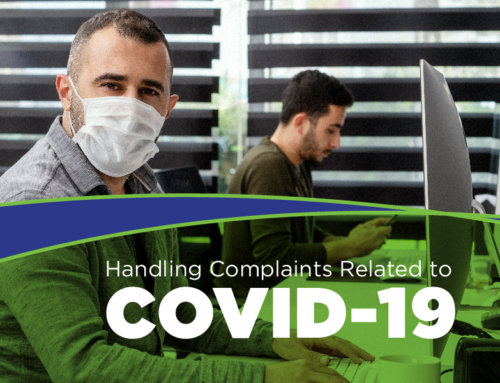As COVID-19 continues to spread globally, the world of business has had no choice but to keep running. Manufacturing workers supporting the supply chain, construction workers maintaining our infrastructure, and business owners looking to adapt their practices during the fight against this disease have proven just how much we rely on them and the products and services they provide.
Now more than ever, it’s vital to onboard these new employees safely and securely. People in hiring positions have a moral obligation to protect their business, clients, and workers. While many businesses are struggling under the economic pressure that this pandemic has brought on and are in need of more manpower, there is never an excuse to practice negligence in your hiring process.
The same is true for current employees headed back to work after mandatory closures due to COVID-19.
Companies like Amazon are already implementing pilot screening programs for their warehouse workers, a group of workers that has proven their worth time and time again during the past few months.
Testing
There are two different types of tests that screen for symptoms: temperature testing and diagnostic testing.
Temperature testing is exactly what it sounds like – taking employee temperatures to rule out fever. The good news is, there are many low-cost options for bulk tests of this kind, however non-contact forehead thermometer with auto-measurement reduces the need for physical contact and don’t need to be cleaned with an alcohol wipe after each use. The other type of test is a diagnostic test. These may uncover more symptoms than just fever, but are significantly harder to come by, and may present issues when it comes to accuracy of results.
In a perfect world, these testing practices would already be set up before employees return to work. However, in states like Texas that have been reopened for longer than other parts of the country, workers have most likely already resumed their typical day-to-day schedules. It is never too late to set up a testing policy and compile a list of testing records, though.
What to do with positive results
The question nobody wants to ask, but everyone needs to know the answer to is this:
“What do I do if an employee who has already been back to work in our facility tests positive for COVID-19?”
The Center for Disease Control recommends anyone who tests positive for the disease or has a fever above 100.4° leaves the workplace and self-isolates for a minimum of two weeks. Before said employee returns to work, employers can and should require a doctor’s note confirming that symptoms have subsided and the isolation period has been completed.
We all want our workplaces to return to normal, and hopefully that happens soon. In the meantime, don’t put the safety of your employees, clients, and yourself on the line by implementing an Infectious Disease Response Plan. LEARN MORE HERE.




